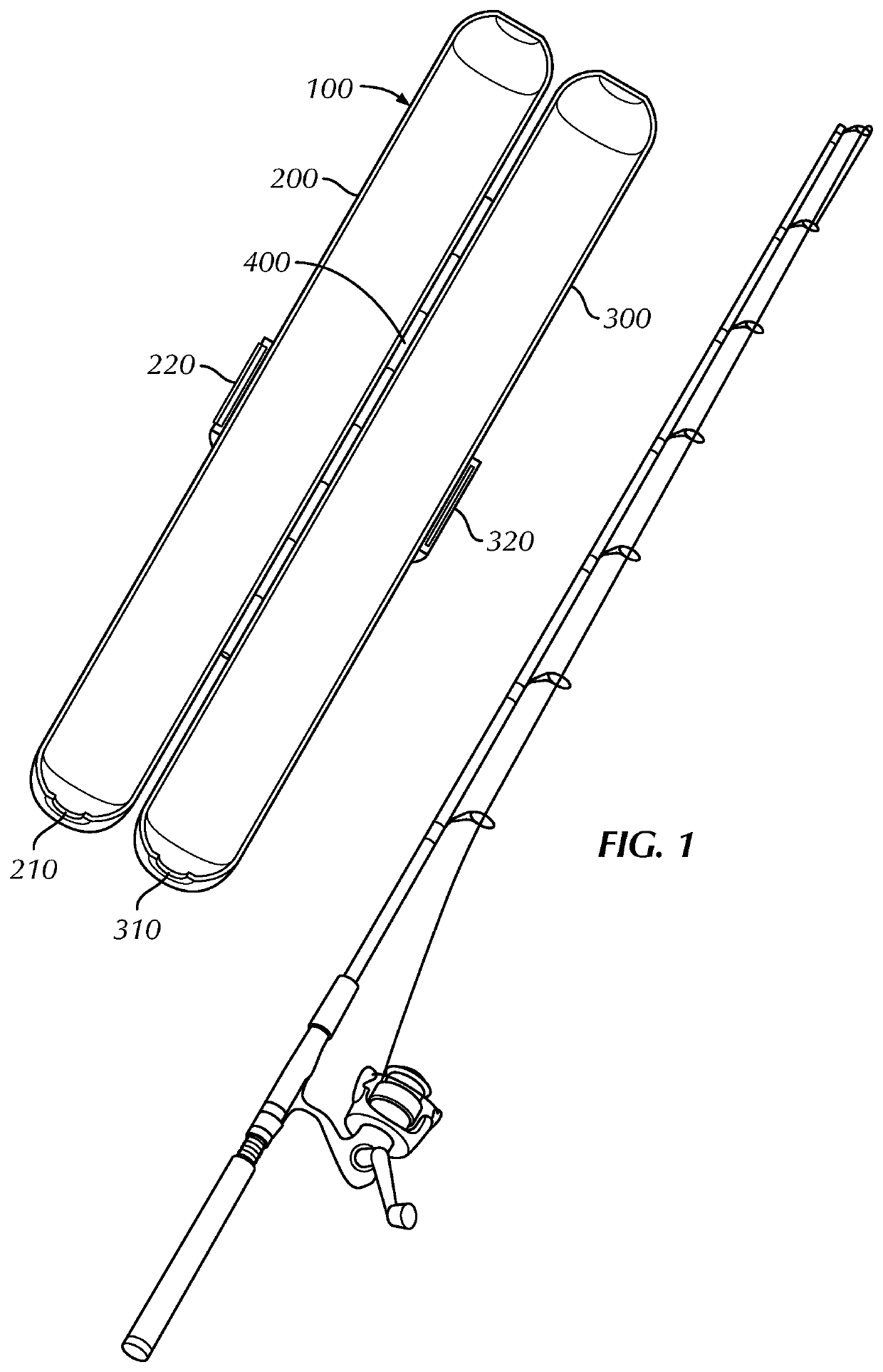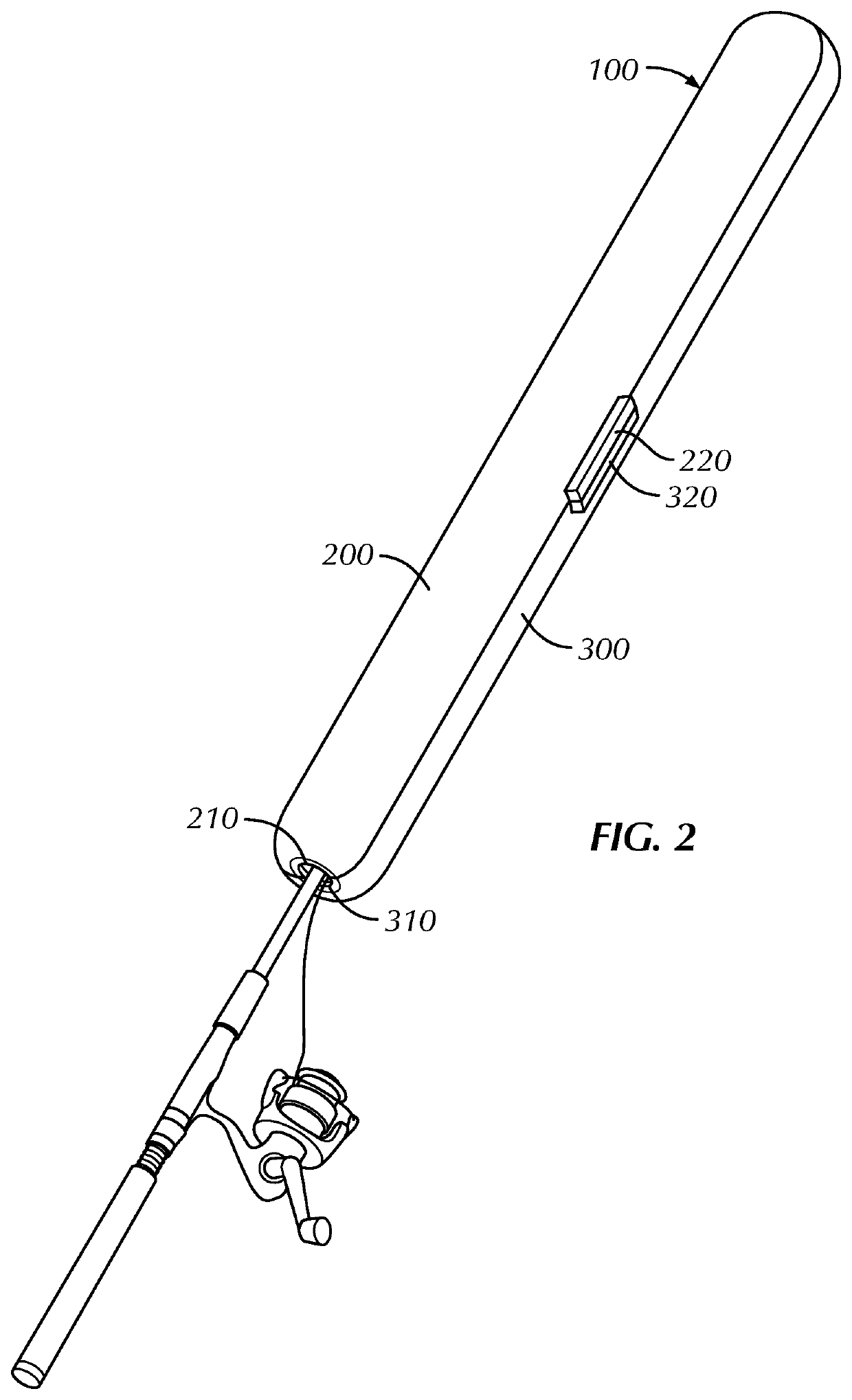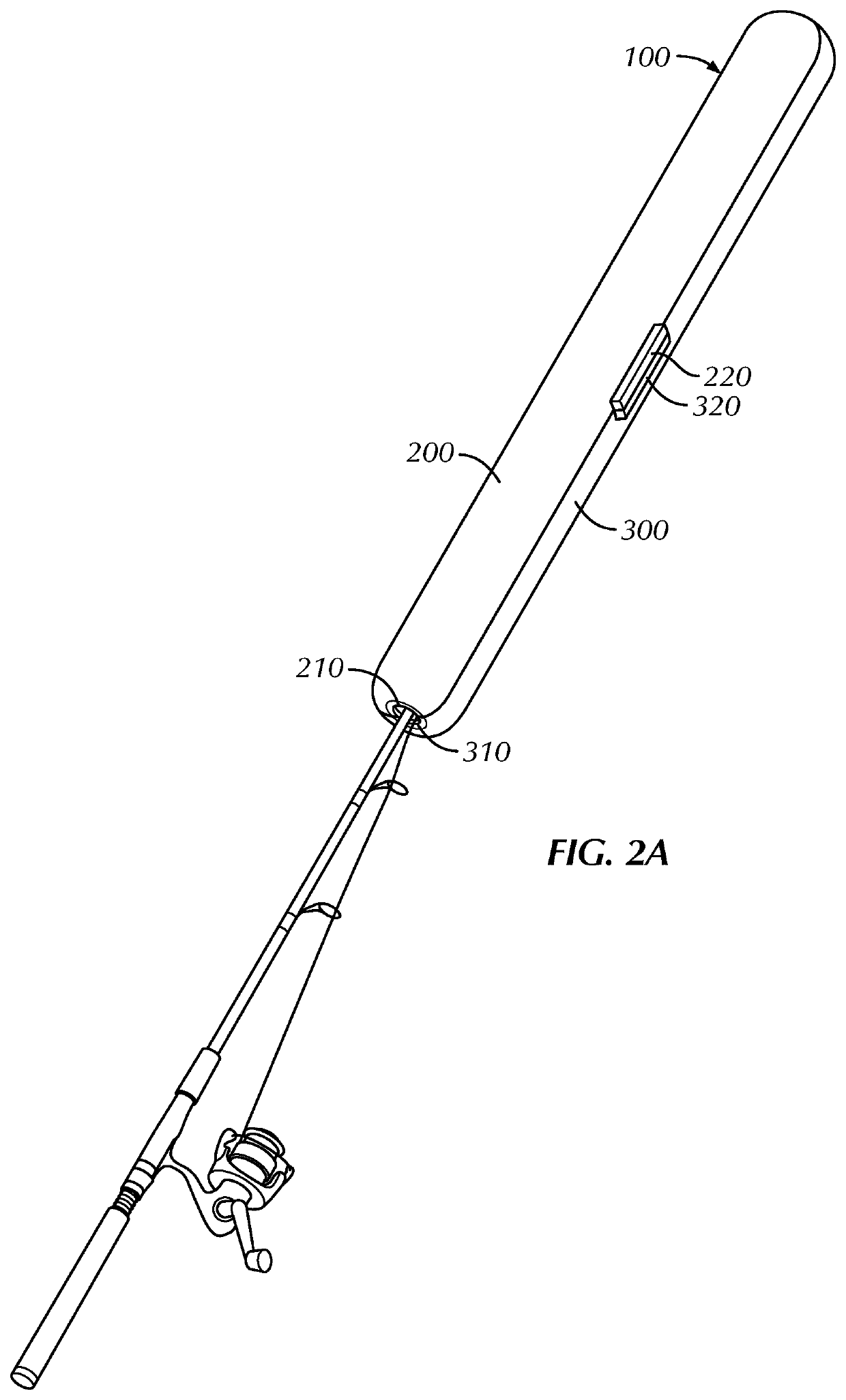Impact Resistant Fishing Rod Case
- Summary
- Abstract
- Description
- Claims
- Application Information
AI Technical Summary
Benefits of technology
Problems solved by technology
Method used
Image
Examples
Embodiment Construction
[0013]A typical fishing rod has a handle for gripping the rod which extends up to the reel of the rod. The shaft of the rod extends from the handle at the point where the reel is attached. The shaft of the fishing rod has a butt end extending from the handle and terminates in a tip end. The shaft of the rod has guides or eyelets which typically take the form of metal loops through which the fishing line is threaded. The shaft is wider at the butt end and narrower at the tip end, with the thinner tip end being most vulnerable to breakage if there is an impact to the fishing rod.
[0014]In the preferred embodiment, the present invention is a fishing rod case made of impact resistant material which encloses a majority of the length of the shaft of the fishing rod, ideally leaving only a small portion of the butt end of the shaft located below the guide exposed to impact, while impacts transferred from the case to the rod will be directed to the base where it is widest and least likely to...
PUM
 Login to View More
Login to View More Abstract
Description
Claims
Application Information
 Login to View More
Login to View More - R&D
- Intellectual Property
- Life Sciences
- Materials
- Tech Scout
- Unparalleled Data Quality
- Higher Quality Content
- 60% Fewer Hallucinations
Browse by: Latest US Patents, China's latest patents, Technical Efficacy Thesaurus, Application Domain, Technology Topic, Popular Technical Reports.
© 2025 PatSnap. All rights reserved.Legal|Privacy policy|Modern Slavery Act Transparency Statement|Sitemap|About US| Contact US: help@patsnap.com



